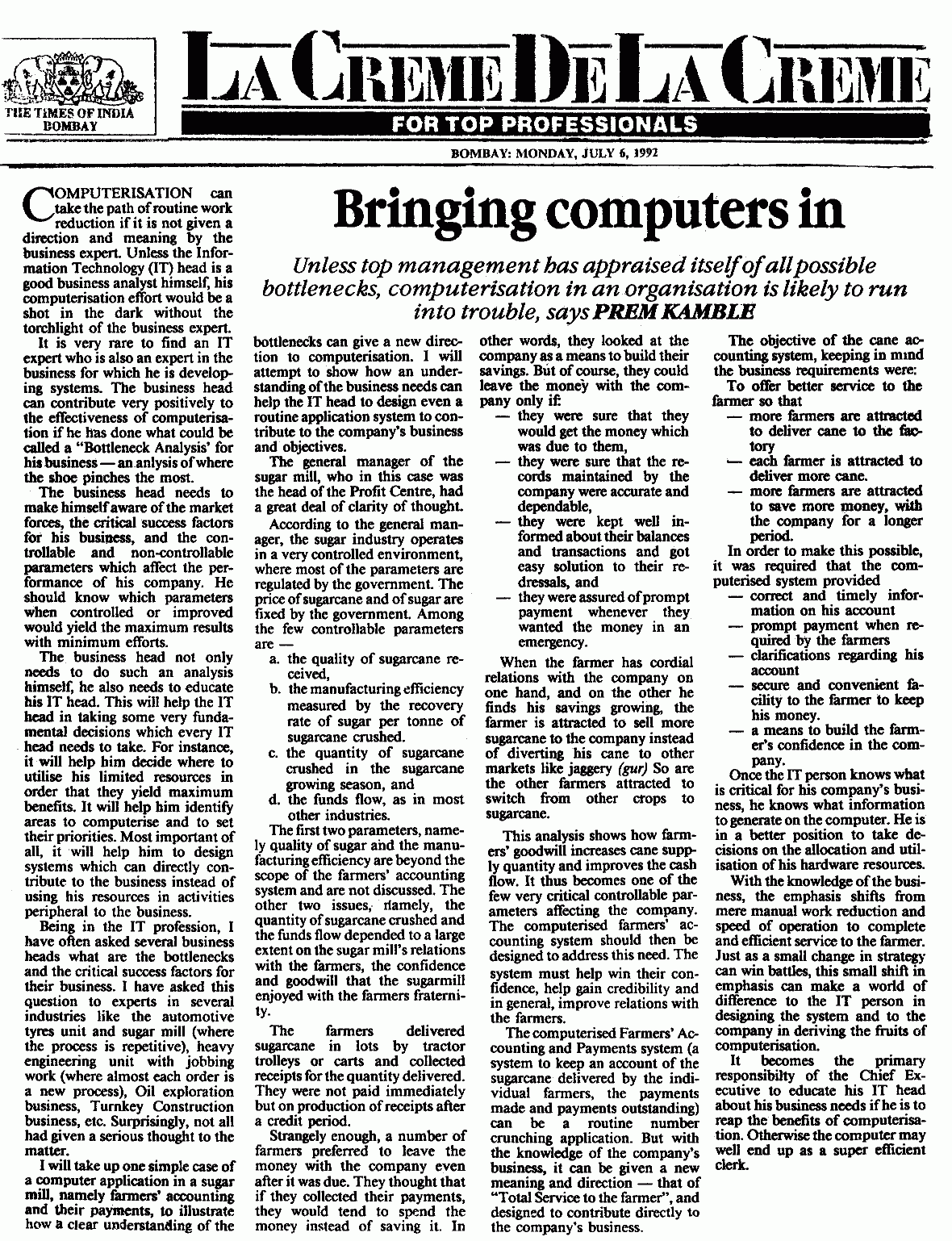Real-life story published in Times of India of my IT Strategy for Successful Computerization. Describes how business oriented IT strategy & defining a Business Objective for every IT Project can result in computerization that yields direct business benefits
